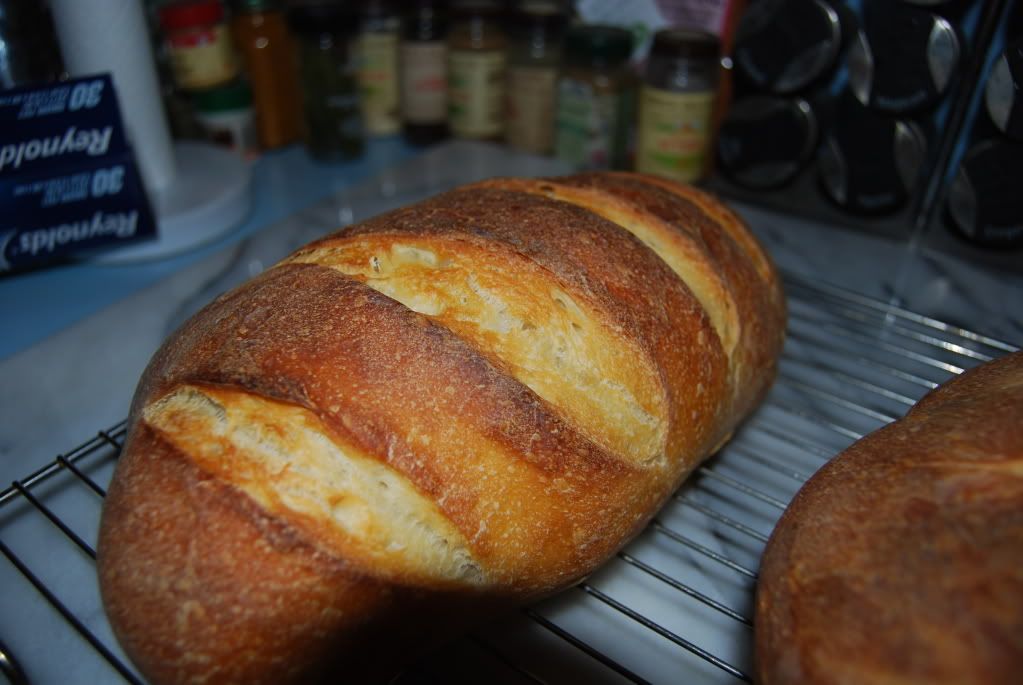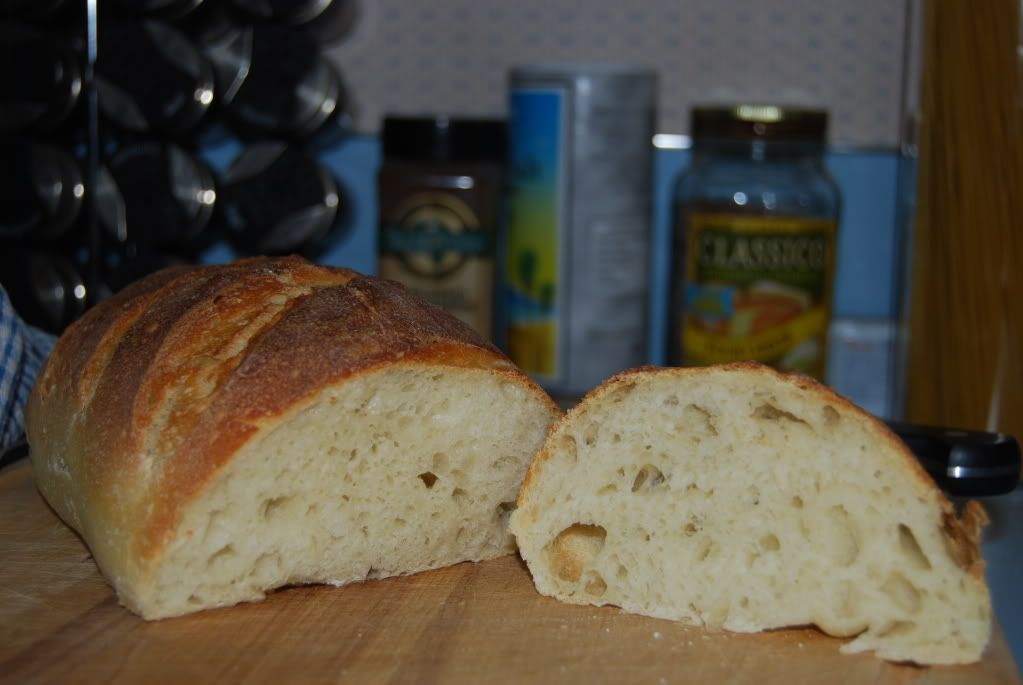My latest foodie project is learning how to make my own sourdough bread. I have had a passionate love for sourdough ever since I was a kid. When I was little we went out to eat a lot and one of our favorite restaurants served sourdough rolls. I would go through an entire basket of rolls and then have no room for my fish when it came around. As an adult I've had trouble finding really good sourdough, so I decided to take matters into my own hands.
I've made bread before to varying degrees of success. I can make a decent baguette, decent white sandwich bread, and tasty (if oddly shaped) challah. I tried making sourdough a few years ago and failed - I mean really failed. I tried to cultivate my own wild yeast starter. It took about two months and while it made the bread nice and sour, it also had the texture of a slab of wood. Back to the drawing board.
This time I decided to cheat and buy a starter. After looking online at company after company I decided to go with the tried and true King Arthur. They had two different starters available and I went with the classic. Not only did I get a starter that I knew would actually raise bread, I got the little crock to store it in so that I'd have less of an excuse to give up on it. The starter came with two pages of instructions on how to feed, use, and store the starter; along with two different bread recipes.
I decided to start of with the simple recipe that made a nice rustic white bread with just a hint of sourness. The recipe made quite decent bread, but I think it expected you to know the basics of bread making before hand. It didn't explain how to knead or proof the bread. Thankfully, after much trial and error I've figured out how to knead bread (with a Kitchen-Aid *yes it's cheating, no I don't care*). I've also figured out how to get bread to rise during a Seattle winter. Since there's no place in my entire house that maintains a seventy degree temperature during the winter I like to turn the oven on to its lowest setting with a pizza stone in it. I let the oven heat up and then turn it off and open the door. This lets the hot air out, but the stone retains a lot of the warmth, without being too hot (yeast doesn't like it above ninety). Then I plunk my dough in the oven, close the door, and come back after an hour or two to nicely doubled dough.
Here are my results:

I've made bread before to varying degrees of success. I can make a decent baguette, decent white sandwich bread, and tasty (if oddly shaped) challah. I tried making sourdough a few years ago and failed - I mean really failed. I tried to cultivate my own wild yeast starter. It took about two months and while it made the bread nice and sour, it also had the texture of a slab of wood. Back to the drawing board.
This time I decided to cheat and buy a starter. After looking online at company after company I decided to go with the tried and true King Arthur. They had two different starters available and I went with the classic. Not only did I get a starter that I knew would actually raise bread, I got the little crock to store it in so that I'd have less of an excuse to give up on it. The starter came with two pages of instructions on how to feed, use, and store the starter; along with two different bread recipes.
I decided to start of with the simple recipe that made a nice rustic white bread with just a hint of sourness. The recipe made quite decent bread, but I think it expected you to know the basics of bread making before hand. It didn't explain how to knead or proof the bread. Thankfully, after much trial and error I've figured out how to knead bread (with a Kitchen-Aid *yes it's cheating, no I don't care*). I've also figured out how to get bread to rise during a Seattle winter. Since there's no place in my entire house that maintains a seventy degree temperature during the winter I like to turn the oven on to its lowest setting with a pizza stone in it. I let the oven heat up and then turn it off and open the door. This lets the hot air out, but the stone retains a lot of the warmth, without being too hot (yeast doesn't like it above ninety). Then I plunk my dough in the oven, close the door, and come back after an hour or two to nicely doubled dough.
Here are my results:


any time you want to get rid of some of that bread....
ReplyDeleteThat can probably be arranged.
ReplyDeleteDear gods. Let me teach you to knead bread dough properly. There is no substitute on earth for the organic heat of the hands when it comes to the treatment of good dough. Not only that, but when you get the hang of it, it kind of becomes a zen experience. It's my favorite part of making bread.
ReplyDeleteMmmmmmmmmm Sourdough! yum
ReplyDelete